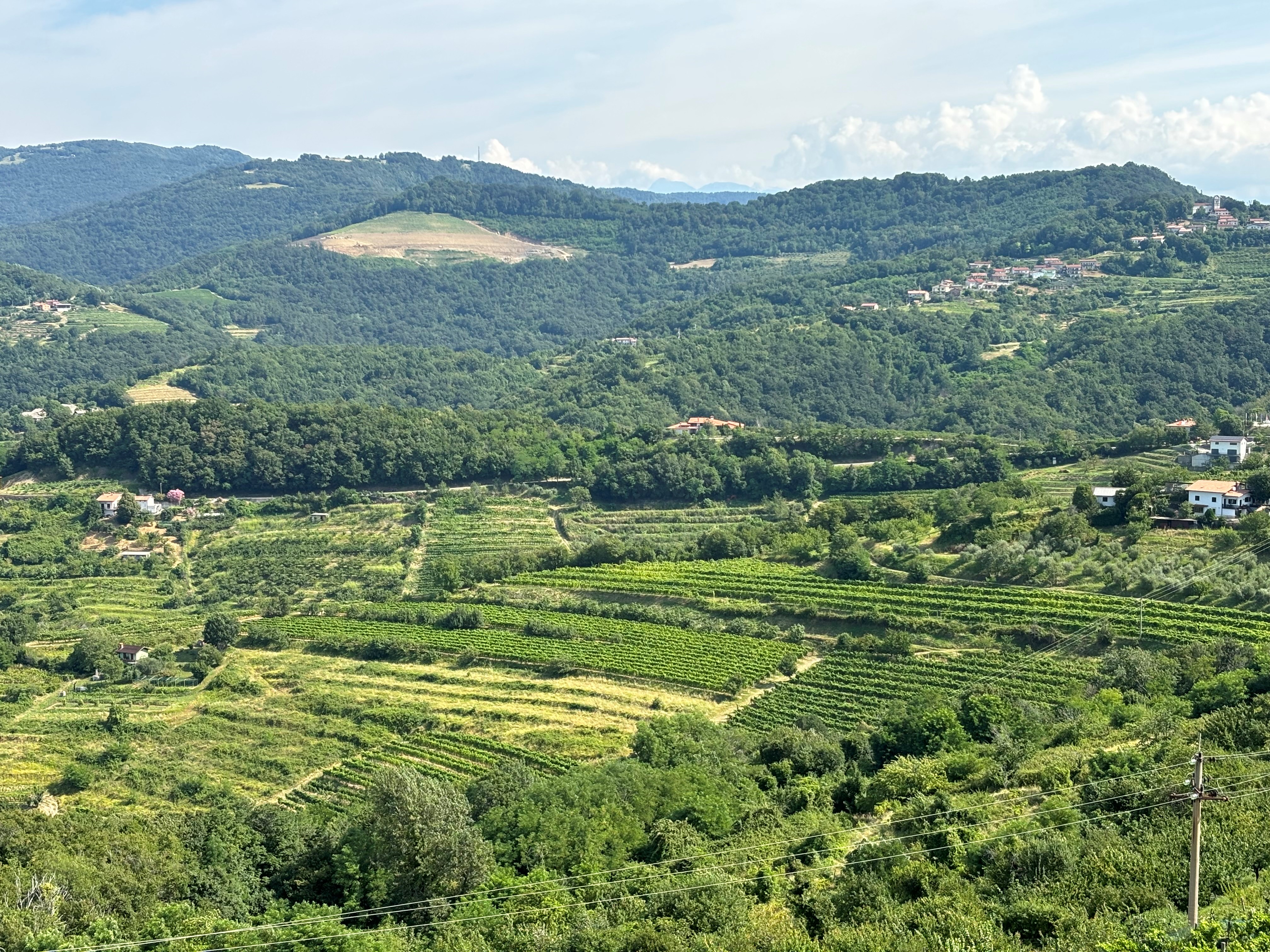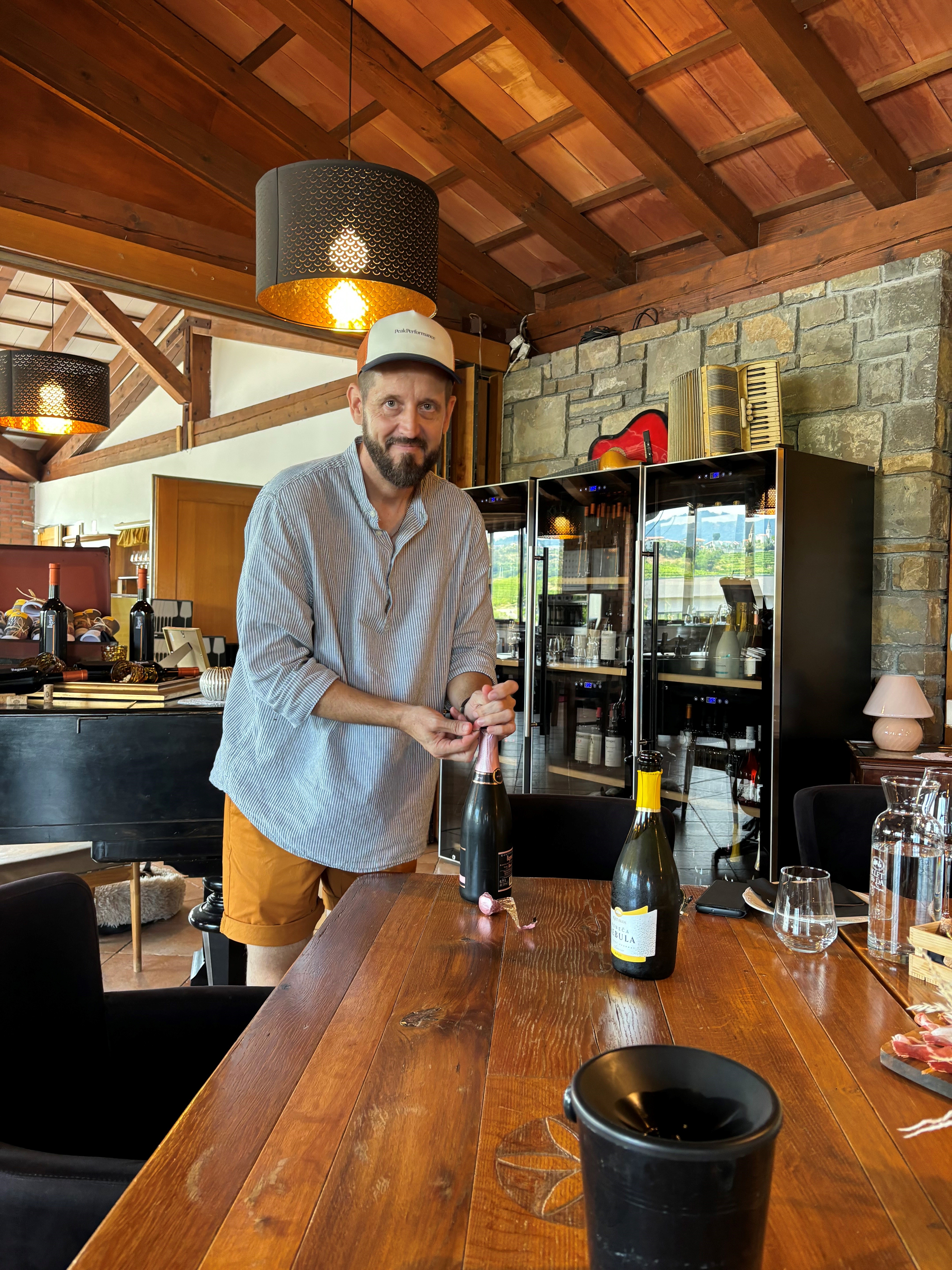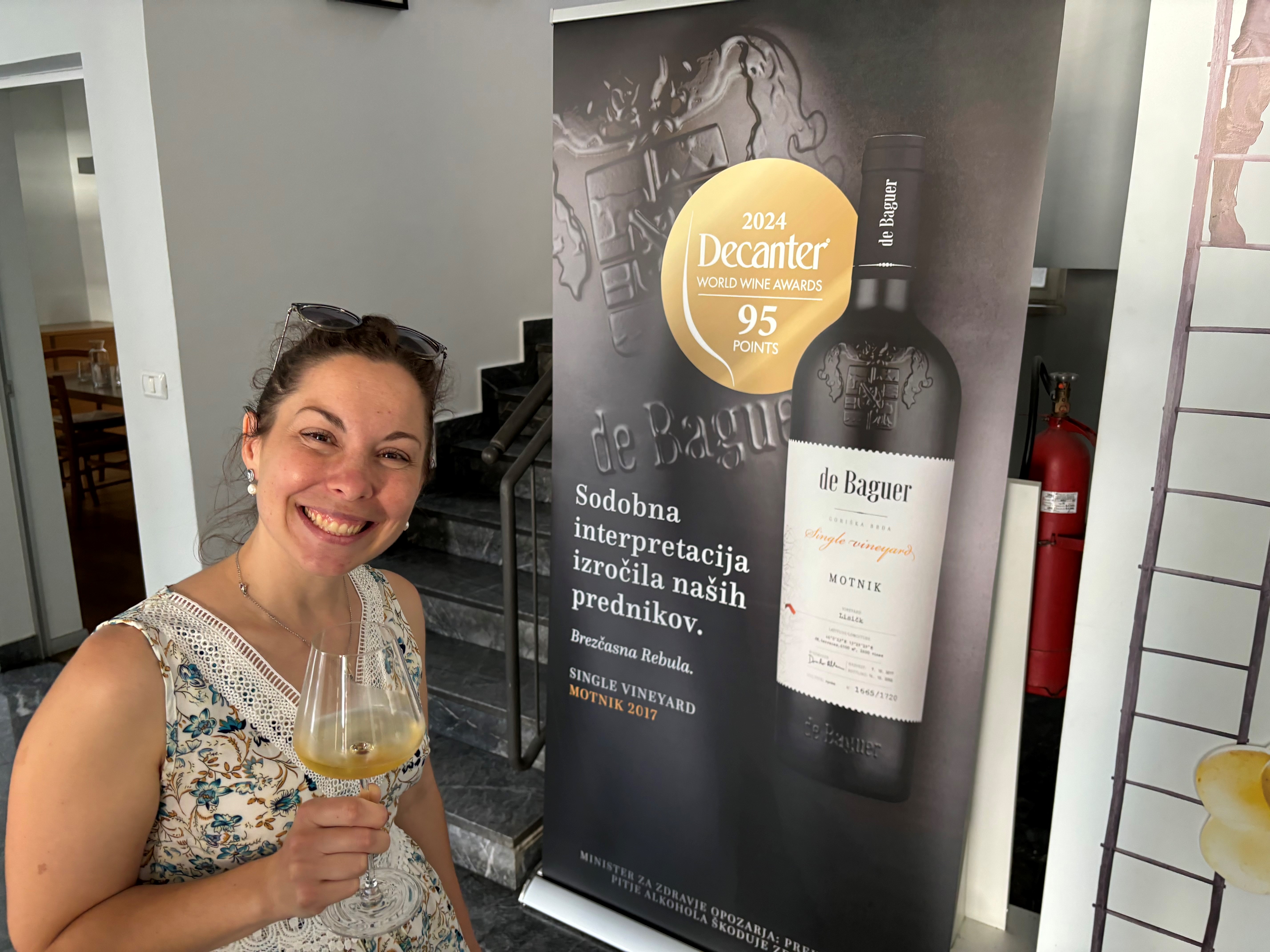An introduction to the amazing vines of Primorska, Slovenia

In July 2024, Richard Pratt, Ohio State Emeritus Professor of Horticulture and Crop Science, engaged Slovenian scientists in a dialogue regarding the impact of climate change on crop production research, which he described in his previous article on the CSEEES website. Grapes were the focus of that discussion. And to his surprise, his hosts planned an inspiring field trip to a famous wine producing region so that he could experience first-hand its production environment (terroir) and wines, a culturally and economically significant product. Pratt was selected to participate in the Slovene Research Initiative’s 2024 Faculty Exchange, in partnership with the Biotechnical Faculty of the University of Ljubljana and the Slovenian Academy of Sciences and Arts. Read about his experience on this incredible excursion below:
Slovenia is a small country, but the wine producing regions are unique and each one produces both traditional grape varieties and world-leading ones. We ventured off to visit the Primorska (Slovene Littoral) region −which includes the Goriška Brda, Vipavska Dolina (Vipava Valley), Kras (Karst) and Slovenska Istra (Slovene Istria) wine areas. A useful map of the wine areas can be found at this link; the Primorska region extends along Slovenia’s western border with Italy and extends into its southwest corner—only about an hour’s drive from Ljubljana. (Or an hour and half if you detour through Trieste as we did.)
Our first stop was at the Grape Varietal Repository near Lože in the Vipava Municipality. There we saw the collection of many varieties and learned of their unique growth and disease tolerance (or lack thereof) characteristics. Please see the picture of my travel companion Dr. Lois Grant examining an accession from the Bela Krajina region.

The next stop was the Gonjače lookout tower. It affords a great view of the beautiful rural landscape and vineyards of the Brda Hills, located halfway between the Alps and the Adriatic Sea.

Another important wine region, the Vipava Valley, lies just to the south and east.
We then traveled to the famous Klet Brda Cooperative in Kojsko. Four-hundred families comprise the cooperative which produces an extensive portfolio of top-quality wines at a range of price points. We were able to sample the local wines at a tasting generously hosted by the Coop.
Dr. Denis Rusjan, Vice-Dean of the Biotechnical Faculty, acted as our expert sommelier for the tasting. He can be seen in the photo getting the next bottle ready for pouring.


I have never before come away from a tasting so impressed by all the wines sampled. I am now a devoted fan of Rebula, which was my first taste of the classic white variety from Brda!
The Vipava Valley lies behind the Kras plateau, just north and inland from the Italian city of Trieste. Vipava is known for its quality white and red wines. In addition to world famous varieties such as Merlot, the region also produces several traditional varieties, the most renowned being Zelen and Pinela (white wines). We had the chance to sample Pinela at a restaurant just before leaving Slovenia and loved it! We also brought back a bottle of Zelen and will be waiting for the right opportunity to open it.
At our next stop, in the Istrian coastal town of Izola, we sampled representative wines from the southernmost portion of the Primorska region. At the lovely terrace of the Manzioli Wine Bar, we tasted the robust red wine Refošk (Refosco), and a white wine, Malvazija (Malvasia Bianca) (both white and macerated orange styles), and Gran Morer, which is a red blend of Refošk, Cabernet Sauvignon, and Merlot. We chatted of course about our favorites and the topic of orange wine was perhaps the most animated – were the orange wines a transient fad or would they have staying power in the market? Time will tell−but what will surely remain timeless is the wonderful comradery that comes from sharing excellent local wines with new friends. And of course, a delicious charcuterie board containing superb Kraški pršut (Karst prosciutto), local cheeses, and olives!
